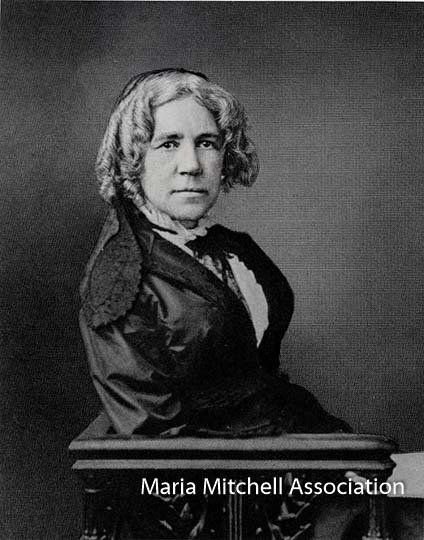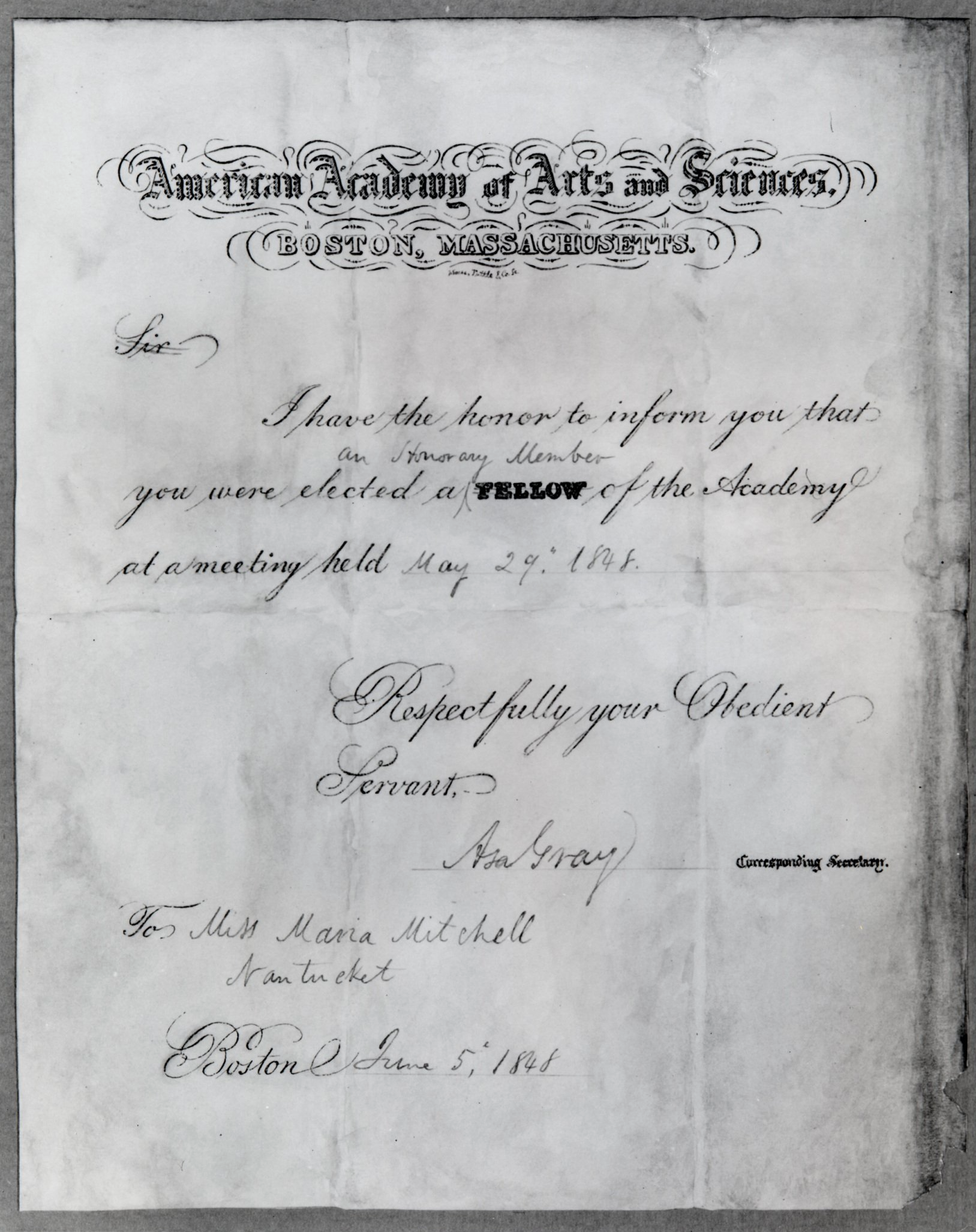About Maria Mitchell
Maria Mitchell (pronounced Ma-RYE-ah) was an astronomer, librarian, naturalist, and educator. She discovered a telescopic comet in 1847, for which she was awarded a gold medal by the King of Denmark. Her discovery thrust her into the international spotlight and she became America’s first professional female astronomer.
Born to Quaker parents, William and Lydia (Coleman) Mitchell on Nantucket on August 1, 1818, Mitchell was an avid learner. The Quaker tradition taught that both boys and girls should be educated and Maria received an education at local schools and from her father’s schools and home tutoring. Her father was a great influence on her life; Maria developed her love of astronomy from his instruction on astronomy, mathematics, surveying and navigation. At age 12, Maria helped her father to calculate the position of their home by observing a solar eclipse. By 14, ship captains trusted her to rate their ships’ chronometers for their long whaling journeys. Maria pursued her love of learning as a young woman, becoming the Nantucket Atheneum’s first librarian. She and her father continued to acquire astronomical equipment and conduct observations, working for the US Coast Survey among other entities.
On October 1st, 1847, Maria was sweeping the sky from the roof of the Pacific Bank on Main Street, where her father was the head Cashier and where they lived as a result of his position. She spotted a small blurry object that did not appear on her charts. She had discovered a comet! After achieving her fame, Maria was widely sought after and went on to many notable accomplishments. She resigned her post at the Atheneum in 1856 to travel throughout the US and Europe. In 1865, she became Professor of Astronomy at the newly-founded Vassar College. She was a founder of the Association for the Advancement of Woman, the first woman member of the American Academy of Arts and Sciences, and one of the first women members of the American Philosophical Society. Her position as the computer for the ephemeris of Venus for the US Nautical Almanac made her one of the first women to work for the US federal government.
Maria was an inspiration to her students. It was Vassar College that Maria felt was truly her home. She believed in learning by doing, and in the capacity of women to achieve what their male counterparts could. “Miss Mitchell” was beloved by her students whom she taught until her retirement, due to failing health, in 1888. She died in 1889, and was buried next to her parents in the family plot at Nantucket’s Prospect Hill Cemetery.
“We especially need imagination in science. It is not all mathematics, nor all logic, but it is somewhat beauty and poetry.” –Maria Mitchell
Are you a student doing a report on Maria Mitchell or a teacher planning a lesson including Maria Mitchell?
Please see our For Students and Teachers section with resources about Maria Mitchell including images, links, recommended reading, and more.
Please also visit our
Archives & Special Collections page to read more about the artifacts, and papers related to Maria Mitchell and the history of Nantucket housed in our collections.



